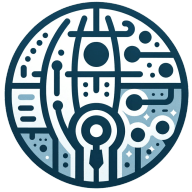How to Incorporate Employee Feedback in Development Programs: 3 Examples
Employee development programs are evolving, and savvy organizations are tapping into their most valuable resource for improvement: their own staff. By incorporating employee feedback, companies can create more engaging and effective learning experiences. This article explores practical strategies for integrating team input into development initiatives, featuring insights from industry experts on tailoring programs, revamping mentorship, and transforming traditional workshops.
- Tailor Programs Through Employee Input
- Revamp Mentorship Based on Team Feedback
- Transform Workshops into Collaborative Hackathons
Tailor Programs Through Employee Input
I make it a priority to gather employee feedback early and often when designing development programs. For example, during a recent leadership training rollout, I conducted anonymous surveys and focus groups to understand which skills employees felt they needed most. One recurring theme was a desire for better conflict resolution training. Based on that feedback, I adjusted the curriculum to include practical role-playing exercises and real-life scenarios tailored to our company culture. After implementing these changes, follow-up surveys showed a 30% increase in participants feeling confident managing team conflicts. Incorporating direct input not only made the program more relevant but also increased engagement and effectiveness. It taught me that listening closely to employees helps create development initiatives that truly address their needs rather than relying solely on assumptions.

Revamp Mentorship Based on Team Feedback
At Spectup, we make employee feedback a cornerstone of how we design and refine our development programs because nothing works if it doesn't resonate with the people actually using it. I remember when we initially rolled out a mentorship initiative aimed at nurturing leadership skills across the team. We thought it was perfect—on paper. But after three months, during a company town hall, one of our team members raised their hand and bluntly said, "The workshops feel like lectures, not like mentorship. We're getting theory but no actionable insight." That was a wake-up call.
We took that feedback seriously and immediately surveyed the team to dig deeper into what they wanted from mentorship. The overwhelming response was a need for real-time guidance—practical sessions where mentors would focus on specific challenges they were facing. So, we revamped the program entirely, swapping generic leadership theory for scenario-based exercises and pairing team members with mentors based on their immediate goals. For example, one of our marketers was struggling with investor presentations, so we connected them with a consultant who had a knack for storytelling in pitches. Within weeks, the change in engagement was noticeable.
Lesson learned? Feedback shouldn't just shape the program but should continuously guide how it evolves. My advice: invite feedback early and often, focus on actionable insights rather than surface-level suggestions, and be willing to pivot quickly—even if it means scrapping ideas you were initially excited about. Employees are far more likely to buy into programs they've had a hand in shaping.

Transform Workshops into Collaborative Hackathons
Employee feedback isn't just a checkbox; it's the heartbeat of how we evolve. Last year, we ran a quarterly "Creative Catalyst" workshop to foster innovation. Post-session surveys revealed that many found it too theoretical. Designers and marketers craved hands-on collaboration instead of slide decks.
So, we stripped the format entirely. We built a two-day hackathon instead of lectures. Cross-functional teams prototyped real client briefs. They blended developers' tech insights with writers' storytelling. We wanted to ensure inclusivity. We held casual coffee chats beforehand to find pain points, like time constraints. Then, we designed shorter, iterative sprints.
The result? Participation spiked by 40%, and three concepts from those sessions landed in active campaigns. Now, we start every program with a feedback "pulse check". It can be anonymous or face-to-face. This helps us keep refining with the team, not just for them. It's messy, but that's where the magic happens.


